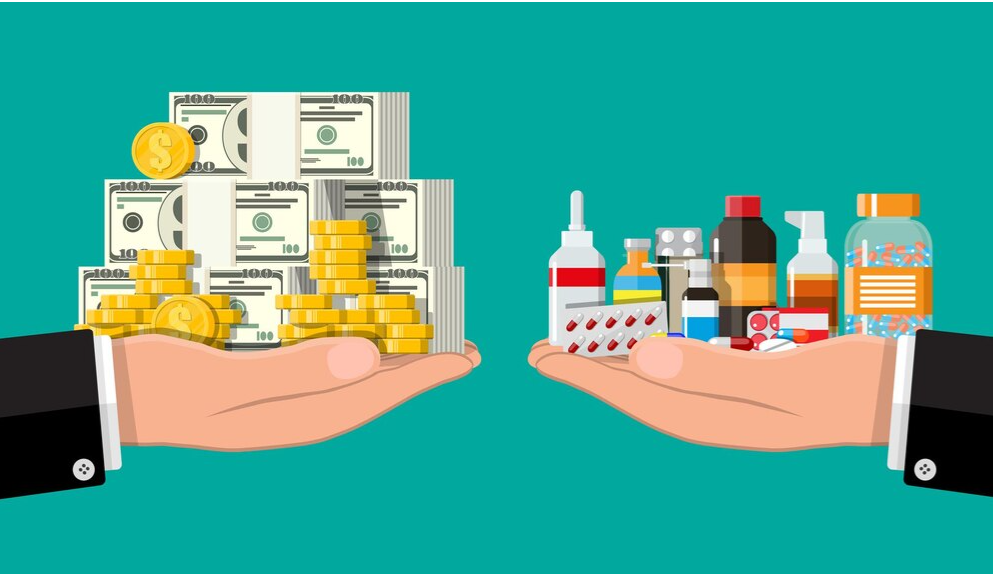Pharmacy benefit managers (PBMs) represent over 266 million Americans as third party administrators managing the selection, purchase and distribution of pharmaceuticals on behalf of health insurers, union health plans and government purchasers.
Functioning as brokers between drug payers, manufacturers, and dispensers (pharmacies), they became a major force in the late 1980s with a business model that forced drug manufacturers to engage in price competition in drug categories that were, at the time, dominated by multiple, similar brand-name drugs.
So why did Ohio Attorney General David Yost call PBMs “modern gangsters,” and accuse them of having “absolutely destroyed transparency, scheming in the shadows to control drug prices on all sides of the market,” in a lawsuit earlier this year? PBMs play a critical role determining the price patients pay at pharmacies, and which medications they can access through their health insurance. Yet, how they negotiate these prices, and what they receive in return is information kept strictly behind closed doors.
Unpacking how PBMs influence healthcare access and cost is critical to understand why PBMs are such a vilified entity in health politics, so much so that both Republican and Democratic lawmakers support legislative reform.
For many consumers purchasing pharmaceuticals, their checkout price has little to do with the drug’s actual retail price. Often, they are charged a copay amount that is entirely dependent on the formulary tier that drug is placed on under their health plan. Thus, one way for pharmaceutical manufacturers to drive up sales for their prescription drugs is through influencing how their products are placed on health plans tiers.
PBMs negotiate “rebates” with manufacturers to secure their spots on formularies, but little is known how these rebates are negotiated or if these savings are actually translated to insurers, employers and consumers–as PBMs claim.
PBMs insist that this “bargaining” is necessary since the United States government plays little role in negotiating with drugmakers compared to other countries. These rebates are not publicly disclosed, leaving some to believe they’re just a way for PBMs to drive up their profits by taking advantage of their ability to set the rules drug makers and buyers have to play by.
The three largest PBMs, CVS Caremark, Express Scripts and OptumRx, manage 80% of all prescriptions in the U.S. CVS owns health insurer Aetna. Cigna purchased Express Scripts and United Healthcare purchased OptumRx. These mergers have further convoluted keeping track of how money is exchanged, and who stands to gain from formulary placements.
The oft-cited ideal used to justify our market-based health care system, where price competition drives innovation and keeps costs value based, seems further obscured considering how PBMs ultimately determine what medications are accessible to patients based on these secretive rebates.
There are concerns that this rebate system enables PBMs to favor placing drugs strategically on their formularies based on how much manufacturers can pay them, rather than more affordable alternatives. My previous article, “How Pharmaceutical Monopolies Cost Us All,” discussed how AbbVie’s biologic Humira enjoyed patent exclusivity beyond the 20 years normally given to drug developers through various mechanisms. Since 2016, five biosimilars were approved by the FDA but did not enter the market due to AbbVie’s aggressive litigation dedicated to protecting its exclusivity.
Now, seven years later, biosimilars for Humira are finally available and have the potential to save our healthcare system 9 billion dollars. The United Kingdom, Denmark and Poland have moved over 90% of their patients on Humira to biosimilars since their introduction in 2018. Kaiser Permanente expects to save $300 million in just this year from switching most of its Humira patients to Amjevita, which is 55% cheaper.
Considering the clear economic benefits to other health systems, why has most of the U.S. market seen such a slow uptake of Humira biosimilars? Perhaps it has to do with two of the three main PBMs, Express Scripts and OptumRx placing the significantly cheaper biosimilars in the same tier as Humira.
Coherus BioSciences’s biosimilar, Yusimry, listed for $995 ends up as the same cost to doctors and patients as Humira’s $6600, providing little incentive to switch. It is unknown what this means for future biosimilar manufacturers considering entering the market, but their viability depends on being able to sustain market shares. This seems futile when AbbVie is warning PBMs that if Humira is not offered on the same tier as biosimilars, it will cease paying them rebates.
Tactics like these are why both PBMs and large pharmaceutical companies benefit from finger pointing at each other whenever they are faced with political pressure from policymakers. Yet for the first time, Congress seems poised to pass legislation addressing some controversial aspects of the PBM industry. There is no illusion that this legislation will finally untangle the healthcare system that leaves us with higher prices for prescription drugs than anywhere else in the world. Nonetheless, it’s a start to draw light on an industry that has thrived from remaining deliberately obscured.
Pooja Dhupati is a student at UACOM-P Class of 2026. After graduating from the University of Southern California with a B.A. in Sociology, she earned her Master’s in Public Health with an emphasis in Health Services and Policy from USC. Afterwards, she enjoyed working for a small children’s health advocacy nonprofit in Downtown Los Angeles and then for Wisconsin’s Division of Public Health through the CDC Foundation. Back home in Phoenix for medical school, she’s excited to combine her background in health policy and community advocacy with her medical education. Since moving back to AZ, she loves competing in dog sports with her tiny L.A. shelter dog, Mitai!


